Telegram used to be a playground for devs to build mini apps on any blockchain they wanted. Then, out of nowhere, they slipped in new rules: either you go all-in on TON or you’re out. Ironically, TON calls itself “The Open Network,” yet now it’s shutting everyone else out.
Now, Here's Why I'm Writing This
Let me cut straight to it: @telegram and @ton_blockchain just pulled a move that feels like a total 180 from what Web3 is supposed to stand for.
For years, @telegram let devs run mini apps that connected to pretty much any chain they wanted.
Then, almost overnight, they changed their terms of service, basically saying, “It’s TON (@ton_blockchain) or bust.”
No warning, no real consultation with the community, nothing.
Developers are squeezed on timelines, a single month to migrate? They are forced to rewrite entire codebases.
It’s worse if you consider that TON's programming model isn’t compatible with any popular blockchain like Sui, Ethereum, or Solana. It also lacks robust infrastructure and has a shaky track record for handling real-world scale.
For all that trouble, they’re offered just $50K in grants.
With this move, @telegram and @ton_blockchain are effectively gatekeeping devs and users.
Now, the main reason I am writing this is to expose the hypocrisy of the so-called “Open Network” and to directly communicate with all the Sui devs and projects affected by this.
Obviously, the people who have not heard this news or have little or no information about this may wonder what this is all about.
So, let me give you some context.
The Story of Telegram and Its Mini Apps
Founded by Pavel Durov in 2013, Telegram kicked off as a secure messenger that put privacy front and center from day one.
Telegram was launched as a response to increasing governmental and corporate intrusions into personal data.
Born from a crucible of political pressures and a desire for free communication, Telegram’s primary goal was to offer users a secure alternative to mainstream messaging platforms.
People gravitated to its fast, slick interface and the promise of encrypted chats that felt genuinely protected from outside prying eyes.
However, Telegram hasn’t been a simple messaging app for long.
As its user base ballooned into the hundreds of millions, the platform expanded its features.
It introduced group chats that could handle massive communities and channels for broadcasting news to the far corners of the web.
Most importantly, it launched a Bot API that let developers build mini apps right into Telegram.
WeChat in China had already proved how powerful mini apps could be, so Telegram said, “Game on!”
Suddenly, devs worldwide were firing up new ideas: automated ticket bookings, gaming hubs, quick polls, or entire business solutions, all woven into Telegram’s interface.
It was a game-changer: instead of leaving the app to do basic tasks, like booking, customer support, or even gaming, you could do it all inside a single chat window.
The momentum was off the charts.
Games like Hamster Kombat and Notcoin soared to tens (even hundreds) of millions of players, showing just how big these so-called “mini” apps could get.
And it wasn’t just about games. Brands and startups flocked to these mini apps.
That synergy, privacy-minded plus dev-centric, was the secret sauce that drove Telegram from “just another messenger” to a platform with nearly a billion monthly active users.
Its open stance meant mini apps could integrate with any blockchain or external service, providing a level of freedom and flexibility rarely seen in other messaging ecosystems.
Or at least, that was the story, until Telegram announced an exclusive deal with TON Blockchain.
So, what’s the deal with TON, and why is Telegram suddenly pushing everyone into a single chain?
That’s where things get interesting.
The Story of Telegram and TON Blockchain
Around 2017–2018, Telegram was on a rocketship trajectory, racking up user numbers that other platforms could only dream of.
They’d already nailed secure messaging and massive group chats, but now they wanted to push the envelope.
So they hatched a plan: build a brand-new Layer‑1 blockchain, the Telegram Open Network (TON).
The idea? Scale to billions of messages and transactions, all rolled into one unstoppable ecosystem.
In theory, TON would become the spine for payments, dApps, collectibles, and those infamous mini apps, all living inside Telegram’s interface.
On paper, it was a bold move, a messaging giant going full throttle into Web3. And to fund it all, Telegram ran a private token sale, raising around $1.7 billion in early 2018.
That was huge, even by crypto’s wild standards.
But the U.S. SEC slammed the brakes, arguing the token sale looked an awful lot like an unregistered securities offering. Lawsuits followed, and by 2020, Telegram publicly backed off, returning cash and “formally” exiting the scene.
Officially, that was that; no more Telegram-driven blockchain. The messaging platform turned the page, publicly distancing itself from TON altogether.
Because the code was open-sourced, 'community developers' supposedly picked up where Telegram left off. But it’s anyone’s guess how they managed to fund the heavy lift of developing a full-blown L1, especially after all that capital was returned.
Ironically, that’s also when devs from other blockchains really leaned into Telegram’s mini app ecosystem.
They saw Telegram as an open playground, one where you could hook into Ethereum, Solana, Sui, or any chain that suited your use case.
No forced exclusivity, no walled gardens, just a cool sandbox to experiment in.
But just because Telegram wasn’t writing code anymore didn’t mean the story ended there.
Fast-forward a few years and we see Telegram announced an exclusive deal with TON, effectively forcing every mini app to use a chain they’re “not really” connected to.”
Telegram's Exclusive Partnership with TON
On January 21, 2025, Telegram threw down the gauntlet. From this point on, if you’re running a Mini App on Telegram, you’ve got to switch to the TON blockchain.
No ifs, ands, or buts.
They gave developers until February 21 to make the jump, waving a “$50K grant” as the sweetener.
But behind that carrot sits a very real stick.
Rewrite your code, bridge your assets, and brace yourself for potential service headaches. Otherwise, risk getting booted off Telegram’s one-billion-user platform.
It’s a jarring 180° from the way Telegram used to roll. For years, devs were free to hook into any blockchain, Ethereum, Solana, Sui, you name it.
Now, the same company that “walked away” from TON after regulatory battles is forcing everyone back into that very chain.
Sounds a little… contradictory?
It’s almost like they never left, like Telegram’s playing puppet master for a chain they once publicly disowned.
The new terms of service read like a walled-garden manifesto.
One minute, devs could pick from EVM or Move or basically any chain that fit their vision. The next minute, it’s “Use TON Connect or get out.”
And they didn’t exactly roll it out with a developer roundtable.
It felt more like a stealth patch, leaving entire teams scrambling.
They had to figure out how to move their code and rebuild on a chain that many say isn’t compatible with any other major blockchains. And they had to do it all within a month.
Even if you can handle a breakneck rewrite, $50K doesn’t come close to covering months of engineering time.
That’s especially true if your entire codebase relies on features TON doesn’t natively support.
Now, the big question is why two platforms, one championing freedom and privacy, the other claiming to be an “Open Network,” are acting this way?
When you take a step back and understand the incentives at play, you realize this isn’t a new playbook.
We’ve seen it before, haven’t we?
First Time in Web3, But Yes, We’ve Seen Walled Gardens Before
Have you ever noticed how tech platforms start out waving the banner of openness and freedom, only to quietly morph into something far more closed off once they get big?
Remember Google’s “Don’t be evil” mantra? Or how Apple initially championed developer creativity only to clamp down with its walled App Store?
OK Let’s rewind to the late 2000s.
The iPhone dropped in 2007, upending the mobile world with a slick touchscreen and an app-based model no one had really nailed yet.
A year later, Apple launched the App Store in 2008. Initially, it’s a developer’s dream.
You pay a $99 fee, get your app listed, and in return, gain access to a massive (and growing) iPhone user base.
It’s revolutionary. But even then, there’s a catch:nApple takes a 30% cut of every sale or in-app purchase.
At the time, most devs shrugged it off. 30% was steep, sure, but consider the alternative: building your own distribution channels? Good luck.
This was the early stage of Apple’s walled garden.
Meanwhile, Google watched Apple’s success and soon launched the Android Market (now Google Play Store). It offered a somewhat similar deal to devs: a 70/30 revenue split and access to a massive global audience.
On top of that, Google pitched “openness,” claiming Android was more flexible than iOS.
At first, both platforms bragged about letting devs create whatever they wanted, games, utilities, or productivity tools, with minimal friction.
But cracks appeared quickly.
Apple insisted on a rigorous app review process, sometimes rejecting apps for ambiguous “quality” reasons.
Google, for its part, boasted fewer restrictions initially, but soon ramped up its own rules.
Over time, both stores refined policies to tighten control: from restricting certain app categories (like cryptocurrency apps in the early days) to requiring all in-app billing go through their proprietary payment systems.
That’s where devs started noticing how “open” was becoming “closed.”
This friction hit a fever pitch with Epic Games v. Apple.
Epic said, “We refuse to pay your 30%” on Fortnite’s in-game purchases. Apple said, “Then you’re out.”
Even after Epic eventually caved and tried to make amends, Apple kept them on the blacklist.
Apple basically told them, “Sorry, Fortnite isn’t getting back on iOS until every single court appeal wraps up.”
So even with Epic waving the white flag, Apple slammed the door shut, leaving Fortnite and its massive user base locked out for the long haul.
The same debate flared up in South Korea, with legislation forcing Google and Apple to allow alternate payment solutions.
Meanwhile, user communities began voicing concerns about data portability, open standards, and the overall direction of “we own everything you do on your phone.”
Over time, both Apple and Google made micro-concessions, like dropping the cut to 15% for the first $1 million in revenue, but the broader structure didn’t budge much.
Developers who demanded more freedom discovered that if they wanted the scale of iOS or Android, they had to play by the rules.
Today, we’re seeing that same script play out at Telegram with their so-called “Open Network,” TON. And it’s the same incentive that drives Telegram and TON to go down this path.
The motivation behind it? Simple: money and control.
Once platforms understood the power of user data and distribution, they tightened their grip.
Same Script, New Stage
Remember when Telegram first announced the TON blockchain back in 2018?
Telegram had this grand idea for TON years ago, before regulators cut them off at the knees.
They paid their fines, stepped away, yet here we are with a supposedly “new” plan that just so happens to funnel everyone onto TON.
The timing is hardly coincidental, given the current regulatory climate is a bit more lenient, and Telegram is still the de facto messaging hub in the Web3 space.
Combine that distribution advantage with a chain that they’re now mandating for all mini apps, and you can see how it’s designed to capture fees, user engagement, and all the on-chain activity in one place.
If Telegram had simply said, “Hey, we’re reintroducing TON, and it’s going to compete head-to-head with other blockchains, have at it,” that’d be fair competition.
Let devs choose the best chain.
But that’s not what happened: they locked the gates, gave devs a short deadline, and offered a small grant that barely covers migration costs.
It’s the same old play: dangle a huge user base in front of developers, and make them drool over instant access to hundreds of millions of users.
Then quietly drop the guillotine and say, “You’re only allowed to use our chain.”
Now the moment they imposed a walled garden, it raised a giant red flag about why they felt the need to coerce devs instead of winning them over organically.
If TON were on par with the big dogs, with solid dev tools, strong performance, and a robust ecosystem, Telegram could let the open market decide.
But developers who’ve actually tested TON say it lags behind on the basics.
That’s why platforms like @memeficlub, @TheBirdsDogs, or @WaveOnSui, with very successful Telegram mini-apps and millions of daily active users (DAUs), are still choosing @SuiNetwork over @ton_blockchain.
The fact is that you can’t magically turn a shaky chain into the next Sui.
You Can't Funnel a Billion Users Into a Blockchain Built on Shaky Foundations
Here’s the thing: when you talk to the devs who’ve actually tried building on TON, they’ll tell you it’s not exactly a cakewalk.
The problem with this strategy is that TON itself is, well, not exactly a dev-friendly power tool.
As the folks who tried it have said repeatedly, it just can’t compete with modern blockchains that have robust DeFi, massive infrastructure, or heavy-duty scalability.
Let me explain.
Picture a chain that says “we’re the future,” but then forces you to navigate a quirky programming model. Plus, it's not compatible with any popular blockchains out there and also has limited tooling.
That’s a recipe for headaches if you’re used to, say, a Sui or Solana, where the toolkits, documentation, and community support are already robust.
Then there’s the question of scaling.
TON promises big numbers, but talk to devs who’ve stress-tested it, and they’ll tell you it still stumbles with high-volume workloads.
Some folks even recall entire mini apps going live and crashing the chain. Meanwhile, every “chain that can’t handle a few thousand concurrent users” horror story sends devs running.
After all, if you’re building a mini app for millions of Telegram users, you can’t risk the network folding under that load.
Finally, there’s the ecosystem factor. Building a dApp is more than just firing up a smart contract.
You need liquidity pools for token swaps, marketplaces for NFTs, lending protocols, indexers, even aggregator tools for DeFi strategies.
In other words, an entire Lego set of composable infrastructure that lets you stitch together the features your users actually need.
That’s precisely why projects like @memeficlub, @TheBirdsDogs, and @WaveOnSui ended up going the Sui route.
The Sui ecosystem is already stacked with essential building blocks, a supportive foundation, and the developer tooling to piece it all together.
On TON, that ecosystem is still pretty sparse.
Sure, there are some Telegram bots and a few experiments, but you’re missing the depth of DEXes, lending platforms, or NFT marketplaces that other blockchains have had time to cultivate.
That isolation forces developers to either rebuild everything from scratch or settle for half-baked integrations.
It’s simply easier and more profitable to spin up on a chain where the path to success is already paved.
Combine all that with the mandatory “TON only!” approach, and it’s no wonder devs are looking elsewhere.
Any developer who’s witnessed how Web2 giants like Apple and Google lock down their platforms knows what comes next.
Once you cave to these power moves, you hand Telegram the green light to tighten the screws even further down the line.
Anyone serious about the open ethos of Web3 can see the writing on the wall. Give Telegram an inch now, and they’ll feel free to claim a mile later.
There Is No Place for Walled Gardens in Web3
The most exciting parts of Web3 are built on collaboration, shared standards, and permissionless innovation.
In a truly decentralized world, you don’t lock devs into your chain. You compete on tech, on user experience, and on the strength of your ecosystem.
If you can’t win builders over through real advantages, faster transactions, a richer DeFi stack, or seamless tooling, then you’re already at a disadvantage.
Forcing them into a “must-use-my-blockchain” ultimatum only alienates your best contributors and stifles the creativity this space needs to thrive.
That’s the exact opposite of what Web3 is supposed to be about.
It’s not about forcing developers behind closed gates; it’s about empowering them with better performance, greater composability, and real user ownership.
That’s the future we’ve been working toward since the early days of blockchain, one where everyone can build, anyone can benefit, and no single gatekeeper has the power to pull the rug.
@telegram and @ton_blockchain still have time to walk back on the ultimatum they’ve made and embrace the true ethos of Web3.
A short-lived exclusivity might look profitable right now, but thriving ecosystems last when they’re actually open, letting devs choose freely.
Platforms like @SuiNetwork will keep welcoming innovators and pushing the boundaries of on-chain performance, no matter what Telegram decides.
If Web3 really is about opportunity, creativity, and transparent competition, then locking people in isn’t just unpopular; it’s unsustainable.














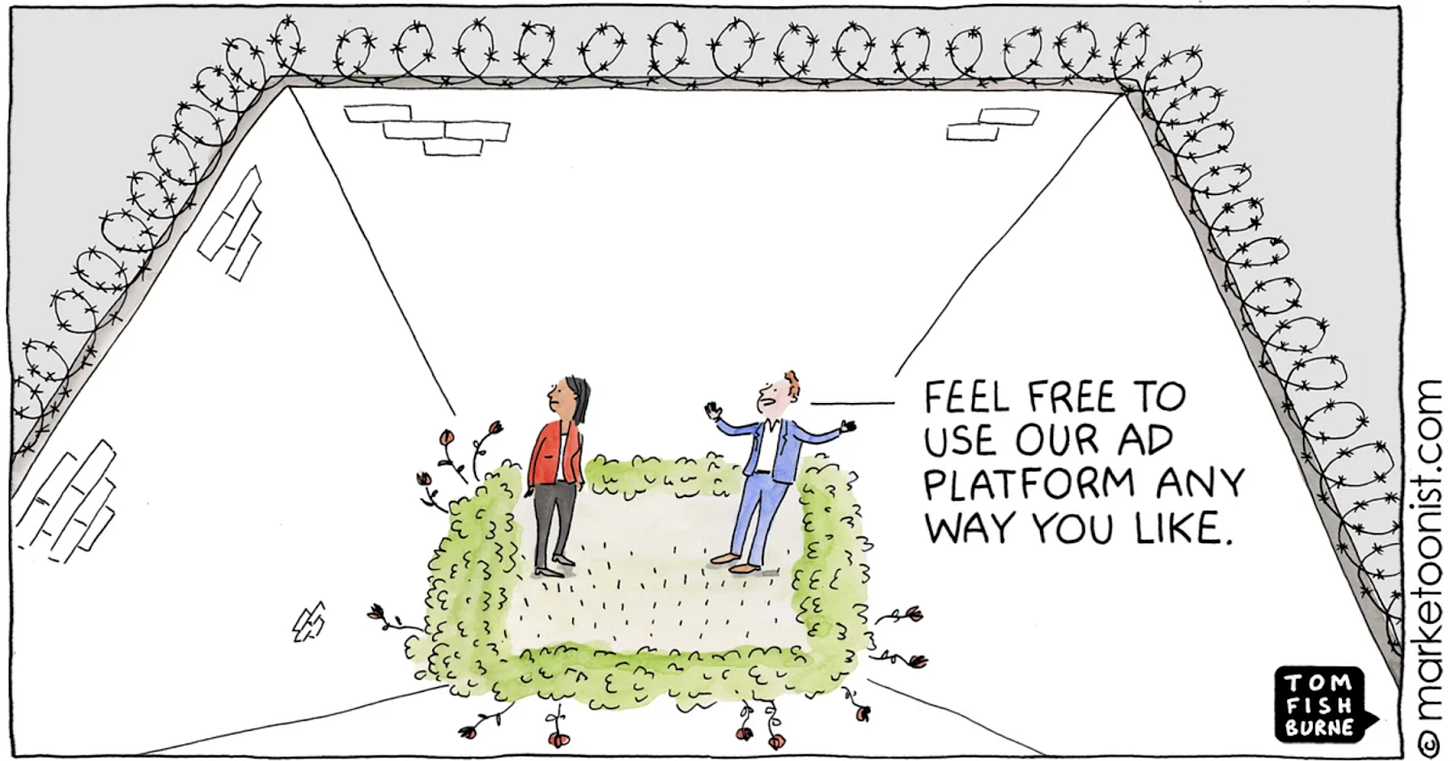


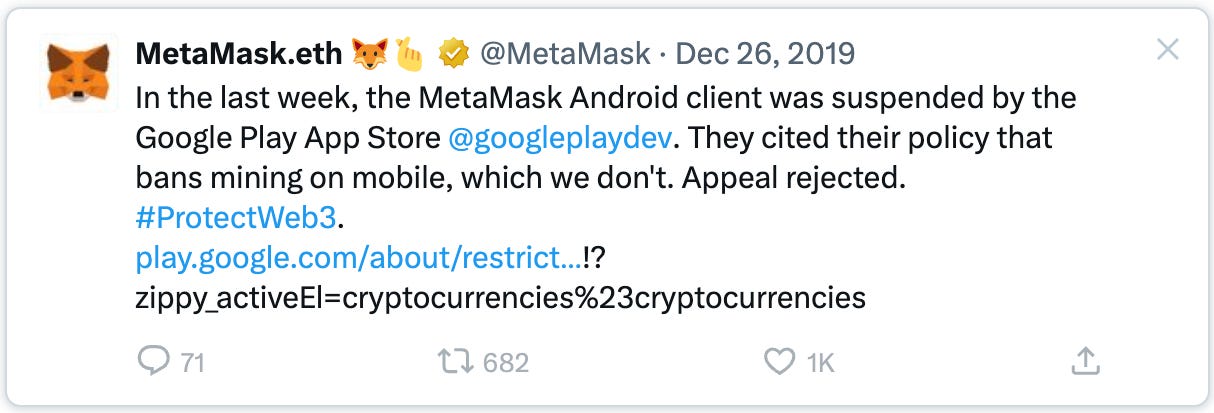





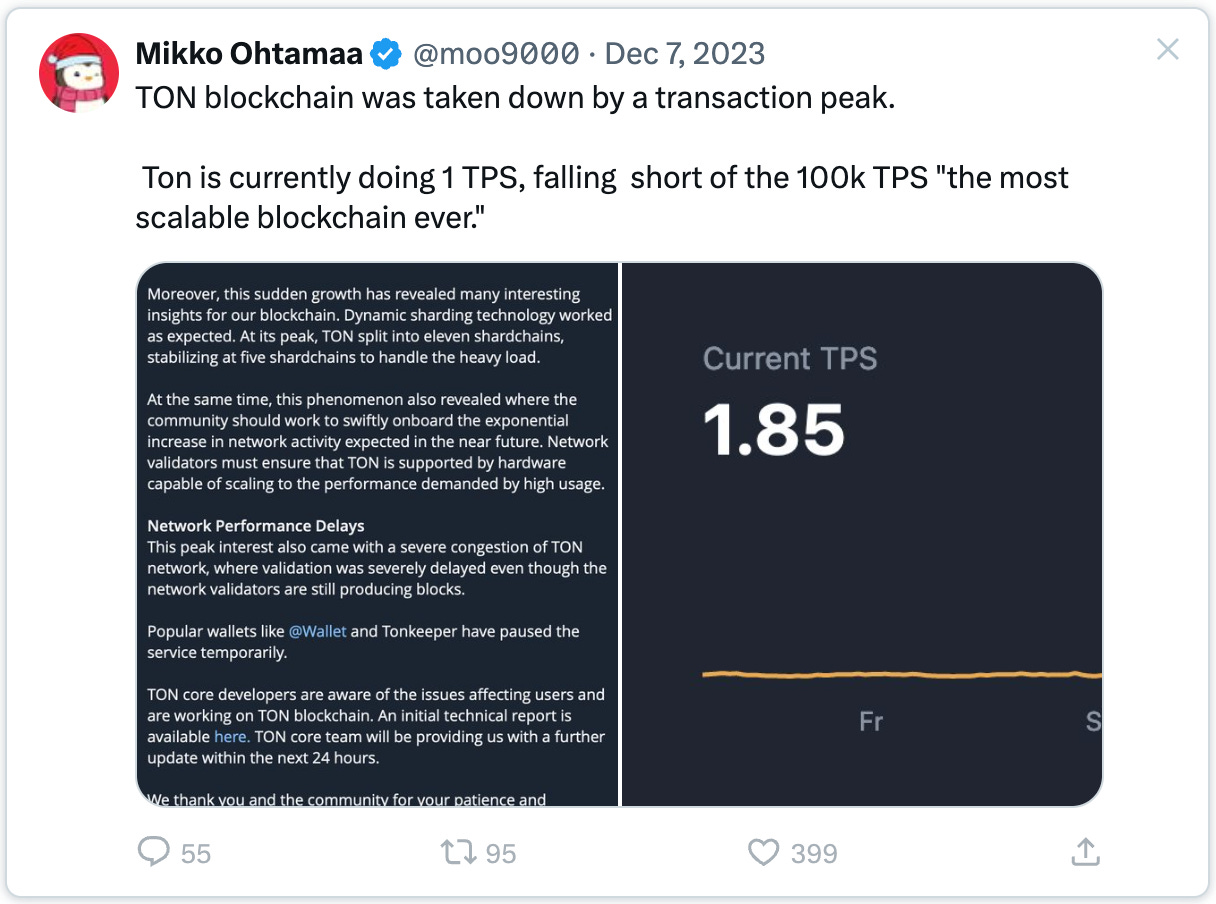
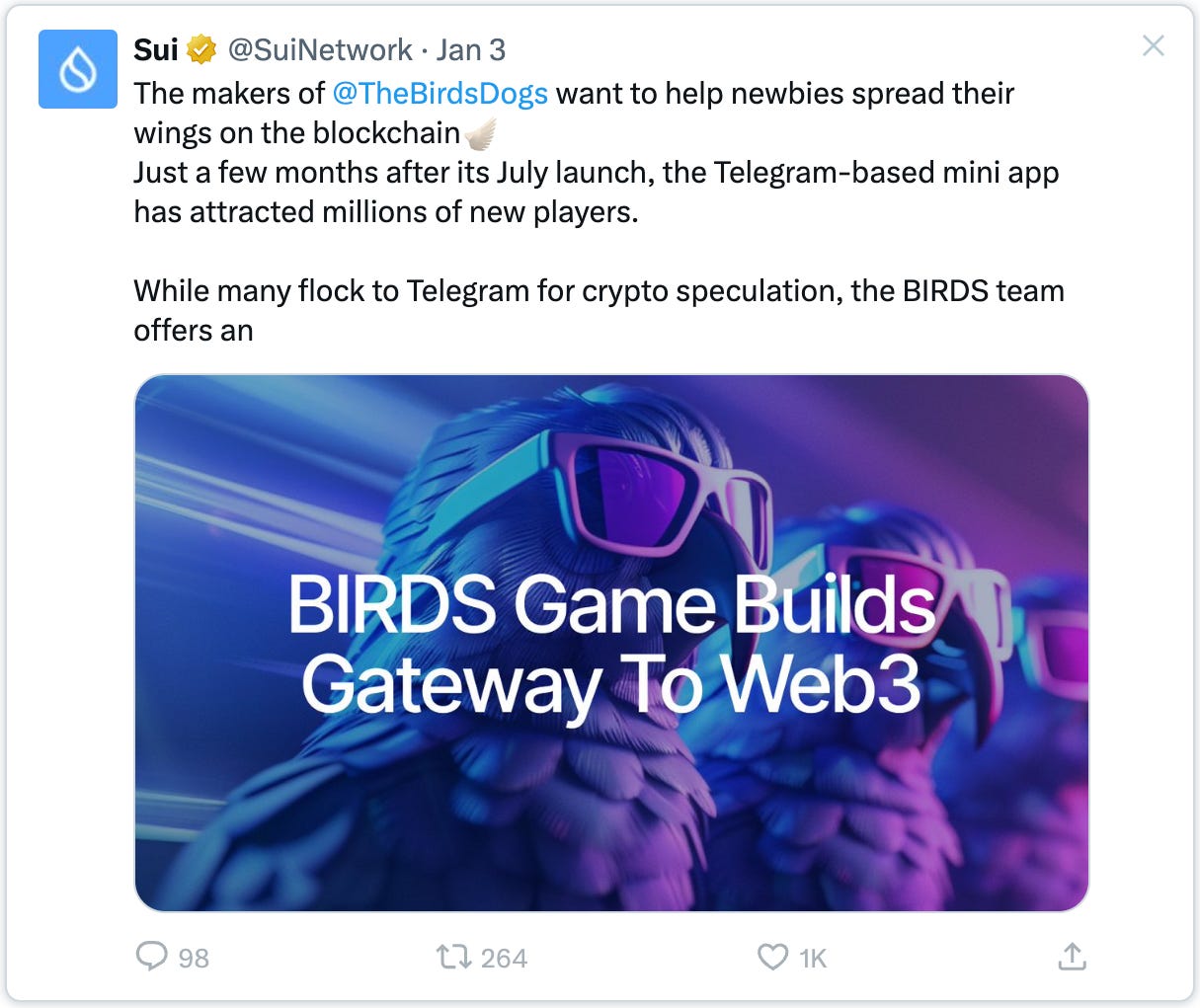
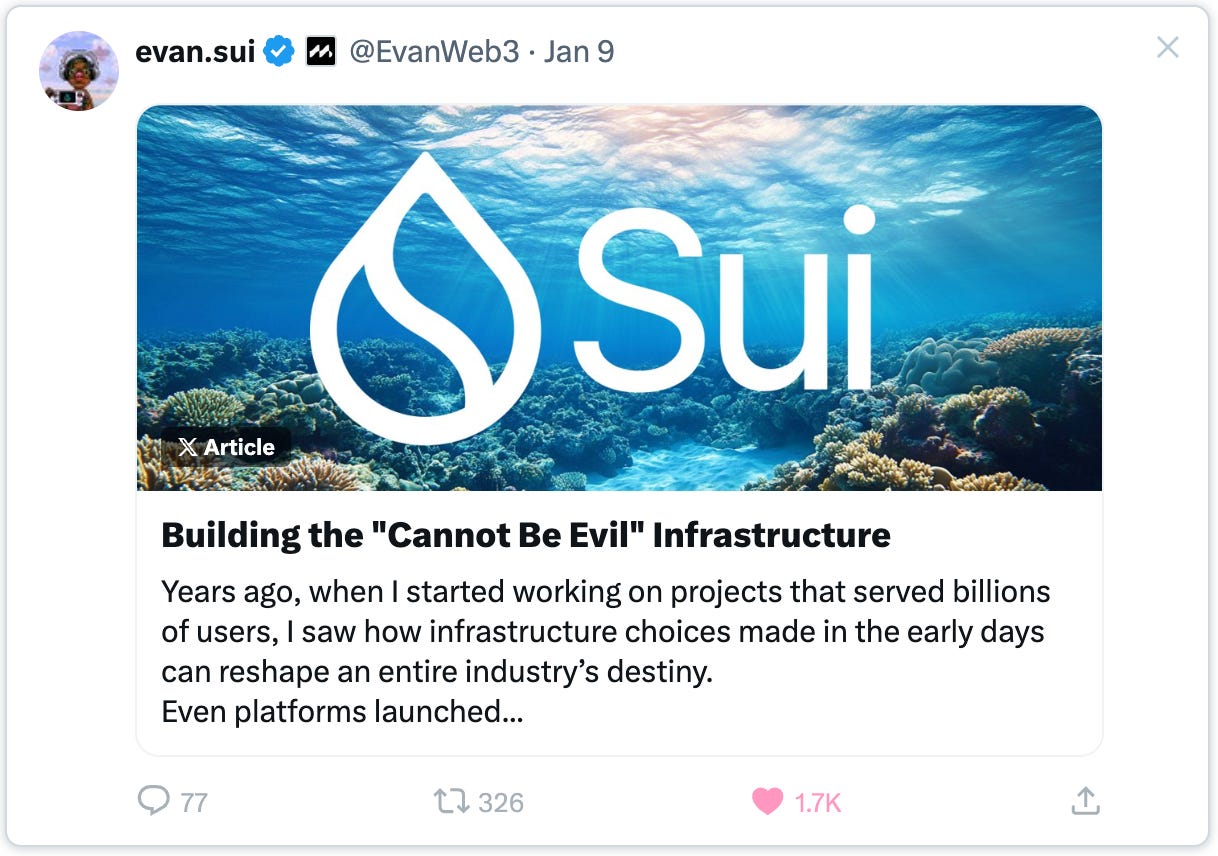
Thank you! We initially tried building on TON, but we were concerned about speed and fees—$1-3 for a single swap smart contract execution? What?! Our app started as a mini-app with multi-chain support, but now we’re transitioning to a classic dApp (and participating in the SUI hackathon! :))